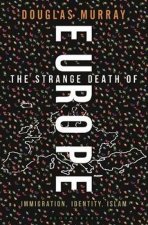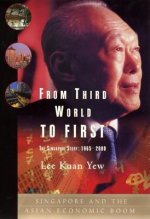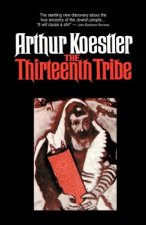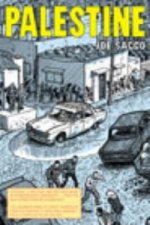
Kód: 04870524
Seeing Red
Autor Theodore Kornweibel
"Seeing Red" is a gripping, painstakingly documented account of a neglected chapter in the history of American political intelligence. From 1918 into the early twenties, any African American who spoke out forcefully for their race ... celý popis
- Jazyk:
 Angličtina
Angličtina - Vazba: Brožovaná
- Počet stran: 248
Nakladatelství: Indiana University Press, 1999
- Více informací o knize

Mohlo by se vám také líbit
-

Reach Out and Give
299 Kč -

Journey through Torah
774 Kč -

Oil That Heals
345 Kč -

Lion and the Mouse
166 Kč -

Libri duo
1242 Kč
Dárkový poukaz: Radost zaručena
- Darujte poukaz v libovolné hodnotě a my se postaráme o zbytek.
- Poukaz se vztahuje na celou naši nabídku.
- Elektronický poukaz vytisknete z e-mailu a můžete ihned darovat.
- Platnost poukazu je 12 měsíců od data vystavení.
Více informací o knize Seeing Red
Nákupem získáte 50 bodů
 Anotace knihy
Anotace knihy
"Seeing Red" is a gripping, painstakingly documented account of a neglected chapter in the history of American political intelligence. From 1918 into the early twenties, any African American who spoke out forcefully for their race-editors, union organizers, civil rights advocates, radical political activists, and Pan-Africanists - were likely to be investigated by a network of federal intelligence agencies. The 'crime' that justified such surveillance was almost always the ideas they expressed. Agents of the federal government watched them, tapped their phones, rifled their offices, opened their mail, infiltrated their organizations, intimidated their audiences, and caused them to suffer the prospect of prosecutions, all because these agents disapproved of their beliefs. A young J. Edgar Hoover was convinced that black militancy - included the demand for civil rights - was communist-inspired and a threat to both national security and white hegemony, views which would remain part of the FBI's gospel well into the 1970s. In the months after the end of World War I, whites all across the country confronted a flood of black militancy spilling out of northern black ghettos. African American socialists and communists dared to claim the right to armed self-defence against lynching and mob violence full political, economic, even social equality and solidarity with radical labour unions. The proud racial chauvinism of Marcus Garvey's Pan African movement seemed 'anti-white' to many individuals who took their own supremacy for granted. Black newspapers and magazines, outspoken in advocating civil rights, appeared to be dangerously infected with a bold 'New Negro' spirit. Many whites in and out of government, unwilling to acknowledge that such views represented genuine black aspirations and anger, could only conclude that the new black ferment was the work of sinister, un-American forces. Fearing that 'Bolshevism' was spreading to America, the federal government's political intelligence network helped create a nation-wide anti-radical panic, the first Red Scare. In addition to targeting 'alien anarchists' and other real and alleged subversives, it launched a broad attack on black militancy. This latter story, reconstructed through an examination of 25,000 pages of government documents, many never before seen by scholars, is told here for the first time in its entirety. The Bureau of Investigation, as the FBI was then known, in partnership with army and navy intelligence and the State and Post Office departments, used surveillance, break-ins, infiltration, agents provocateurs, and prosecution to try to destroy black movements, publications, and leaders. Black agents and undercover informants played key roles in these efforts. The Bureau's anti-radical campaign was led by young J. Edgar Hoover, who became convinced that black militancy - including the demand for civil rights - was communist-inspired and a threat to both national security and white hegemony, views which would guide the FBI into the 1970s.
 Parametry knihy
Parametry knihy
Zařazení knihy Knihy v angličtině Humanities History Regional & national history
501 Kč
- Plný název: Seeing Red
- Podnázev: Federal Campaigns against Black Militancy, 1919-1925
- Autor: Theodore Kornweibel
- Jazyk:
 Angličtina
Angličtina - Vazba: Brožovaná
- Počet stran: 248
- EAN: 9780253213549
- ISBN: 0253213541
- ID: 04870524
- Nakladatelství: Indiana University Press
- Hmotnost: 408 g
- Rozměry: 234 × 156 × 18 mm
- Datum vydání: 22. July 1999
Oblíbené z jiného soudku
-

Ten Myths About Israel
336 Kč -

Decline and Fall of the Roman Empire
130 Kč -

Strange Death of Europe
410 Kč -

Citizens
543 Kč -

Last Voyage of the Lusitania
486 Kč -

Londoners
316 Kč -

Secret History
303 Kč -

In The Garden of Beasts
327 Kč -

Reverence for Wood
215 Kč -

Polish Saber
1520 Kč -

Wages of Destruction
543 Kč -

From Third World to First
736 Kč -

Interpreting Our Heritage
487 Kč -

Introduction to the History of the Principal Kingdoms & States of Europe
405 Kč -

Voices of the Foreign Legion
406 Kč -

Covering Islam
407 Kč -

Maurice's Strategikon
736 Kč -

Napoleon's Master
614 Kč -

Becoming Indian
944 Kč -

Penguin Historical Atlas of Ancient Egypt
457 Kč -

Blind Mans Bluff
343 Kč -

Middle Byzantine Historians
5094 Kč -

Thirteenth Tribe
420 Kč -

Anatomy of the Nuremberg Trials
412 Kč -

Twilight of the Romanovs
943 Kč -

Hundred Years' War on Palestine
338 Kč -

Ethnic Cleansing of Palestine
357 Kč -

Palestine
534 Kč -

The Secret Diaries Of Miss Anne Lister: Vol. 1
304 Kč -

Giza Power Plant
365 Kč -

The Balkans, 1804-2012
543 Kč -

Age Of Revolution
410 Kč -

The Thirteenth Tribe
308 Kč -

Millennium
358 Kč -

Alexiad
423 Kč -

Heraclius, Emperor of Byzantium
774 Kč -

1948
631 Kč -

Annals of Imperial Rome
357 Kč -

Strike and Hold
703 Kč -

Diana: Her True Story - In Her Own Words
306 Kč -

How to be a Victorian
357 Kč -

The Oxford History of Ancient Egypt
383 Kč -

Line in the Sand
265 Kč -

Rise And Fall Of The Third Reich
543 Kč -

History of Japan
405 Kč -

Illustrated Encyclopedia of Uniforms of the American War of Independence
543 Kč -

Olympic, Titanic, Britannic
750 Kč -

Medieval Monsters
277 Kč -

Vanished Kingdoms
514 Kč
Osobní odběr Praha, Brno a 12903 dalších
Copyright ©2008-24 nejlevnejsi-knihy.cz Všechna práva vyhrazenaSoukromíCookies



 Vrácení do měsíce
Vrácení do měsíce 571 999 099 (8-15.30h)
571 999 099 (8-15.30h)